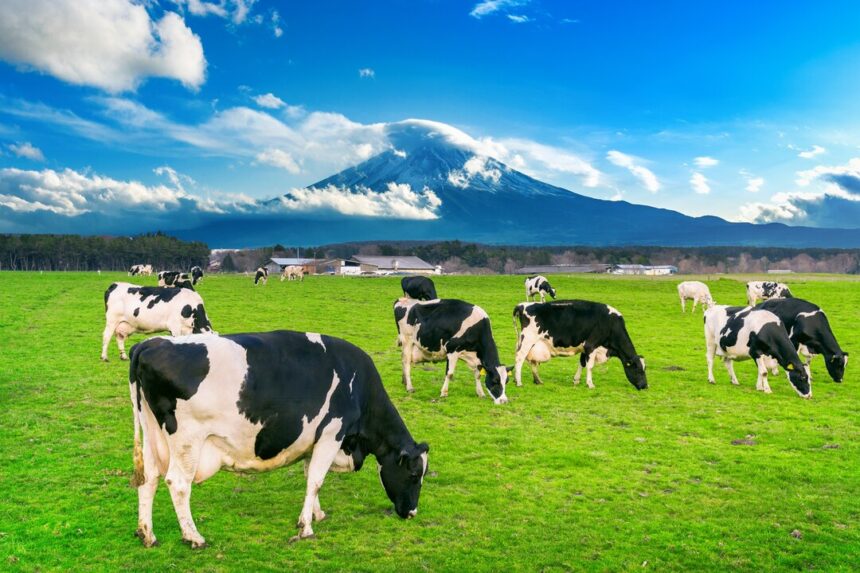As global concerns about climate change and environmental degradation continue to rise, sustainable farming practices are gaining traction as a solution for mitigating these challenges. Regenerative grazing, a holistic approach to managing livestock on pastureland, is emerging as a promising method for improving soil health, sequestering carbon, and enhancing ecosystem resilience. In this article, we’ll explore the concept of regenerative grazing and its role in sustainable farming, highlighting its benefits and importance in fostering a greener future for agriculture.
Understanding Regenerative Grazing:
Regenerative grazing, also known as managed grazing or rotational grazing, involves strategically moving livestock across pastureland to mimic natural grazing patterns. Unlike conventional continuous grazing, where livestock are left to roam freely on a single pasture, regenerative grazing divides pastures into smaller paddocks and rotates animals periodically to prevent overgrazing and allow for grass recovery.
Key Principles of Regenerative Grazing:
- Rotational Grazing: Livestock are moved regularly between paddocks to optimize forage utilization and promote grass growth.
- Rest and Recovery: Pastures are given adequate time to rest and recover between grazing cycles, allowing vegetation to replenish and soil health to improve.
- Biodiversity Enhancement: Regenerative grazing supports diverse plant and animal species by creating habitats conducive to wildlife and beneficial insects.
- Soil Health Improvement: Grazing animals stimulate soil microbiology through trampling, dung deposition, and urine distribution, leading to increased organic matter and nutrient cycling.
- Carbon Sequestration: Healthy pastures managed with regenerative grazing practices have the potential to sequester carbon from the atmosphere, mitigating climate change.
Benefits of Regenerative Grazing:
- Soil Health: Regenerative grazing promotes soil fertility, structure, and resilience, leading to improved water infiltration, drought resistance, and nutrient retention.
- Carbon Sequestration: By increasing plant growth and enhancing soil organic matter, regenerative grazing helps capture and store carbon in the soil, mitigating greenhouse gas emissions.
- Biodiversity Conservation: Managed grazing supports diverse plant and animal communities, contributing to ecosystem health and resilience.
- Water Quality and Quantity: Healthy pastures managed with regenerative grazing practices help reduce erosion, sedimentation, and nutrient runoff, improving water quality in streams and rivers.
- Economic Viability: Regenerative grazing can enhance farm profitability by reducing input costs, improving livestock performance, and enhancing ecosystem services over the long term.
Challenges and Considerations:
While regenerative grazing offers numerous benefits for sustainable farming, it also presents challenges and considerations that farmers must address:
- Initial Investment: Transitioning to regenerative grazing may require upfront investments in infrastructure, such as fencing, water systems, and grazing management tools.
- Knowledge and Skills: Farmers need to acquire knowledge and skills in holistic management, livestock handling, and pasture management to implement regenerative grazing effectively.
- Market Demand: Consumer demand for sustainably produced meat and dairy products may influence the adoption of regenerative grazing practices, creating market opportunities and challenges for farmers.
- Policy and Support: Government policies, incentives, and extension services can play a crucial role in supporting farmers transitioning to regenerative grazing and promoting sustainable agriculture more broadly.
Regenerative grazing offers a promising pathway for enhancing soil health, sequestering carbon, and promoting sustainable farming practices. By adopting holistic management approaches and implementing regenerative grazing techniques, farmers can improve the resilience and productivity of their land while mitigating environmental impacts. As global efforts to address climate change and food security intensify, regenerative grazing is poised to play a critical role in fostering a greener future for agriculture.
Join 'Farmers Mag' WhatsApp Channel
Get the latest Farming news and tips delivered straight to your WhatsApp
CLICK HERE TO JOIN






